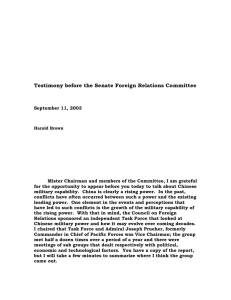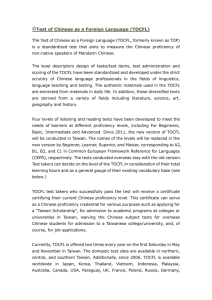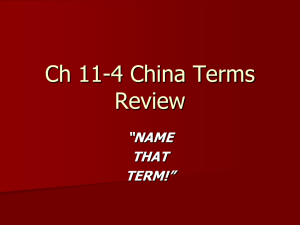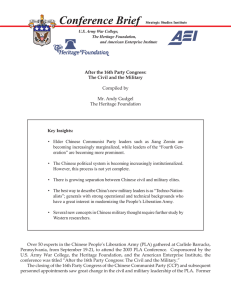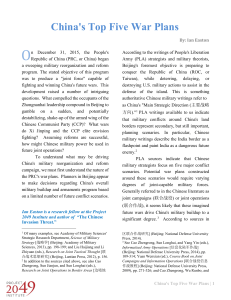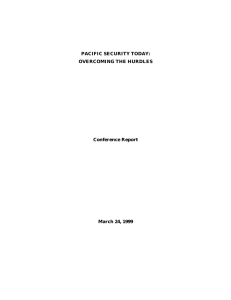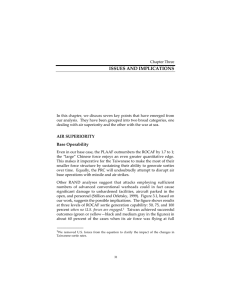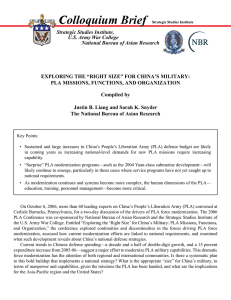Mr. Mark Cozad China Forces Senior Intelligence Officer Defense Intelligence Agency
advertisement
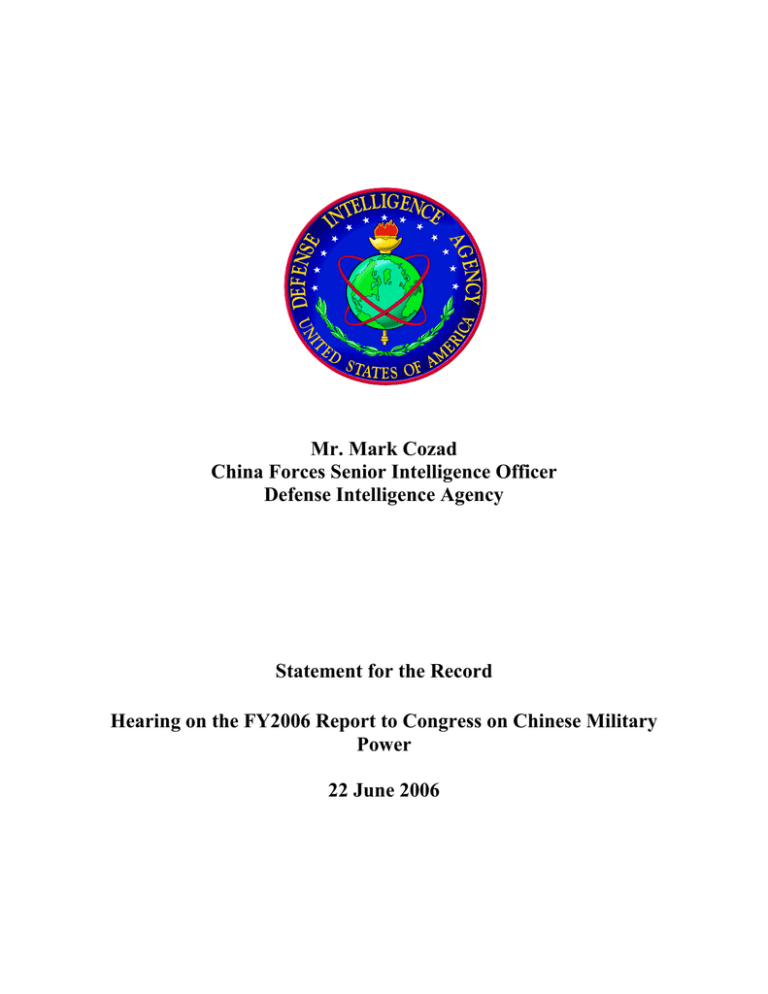
Mr. Mark Cozad China Forces Senior Intelligence Officer Defense Intelligence Agency Statement for the Record Hearing on the FY2006 Report to Congress on Chinese Military Power 22 June 2006 INTRODUCTION Thank you Mr. Chairman and members of the committee for inviting me today. I would like to take this opportunity to briefly address the FY2006 Report to Congress on the Military Power of the People’s Republic of China. China’s rise as a regional and political economic power with global aspirations has significant implications for both the Asia-Pacific region and the international community. China now has a global foreign policy and engages on key issues in almost all international security and economic institutions. To sustain its economic development, it must maintain and expand its access to global markets and resources. Of special note, China’s energy demands have risen sharply, and sustained growth will ensure this trend continues. The first Report to Congress on the Military Power of the People’s Republic of China was released on 23 June 2001, 6 years ago tomorrow. Since the report’s inception, the Defense Intelligence Agency (DIA) has supported the Office of the Secretary of Defense in developing and drafting the report. DIA bases its inputs on a wide variety of reporting, both Western and Chinese. As the nation’s premier military intelligence organization, DIA is well situated to analyze both the current and future development of the People’s Liberation Army (PLA), as well as China’s grand strategy, security strategy, and military strategy. BACKGROUND The PLA is in the midst of a long-term transformation from a mass Army designed for protracted wars of attrition on its territory to a more modern force to fight short-duration, high-intensity conflicts against high-tech adversaries. The focus of China’s modernization remains to prepare for possible contingencies in the Taiwan Strait, including the possibility of U.S intervention. Improved Chinese capabilities coupled with growing economic and diplomatic clout continue to shift the military balance in the Taiwan Strait in favor of the mainland. Although Beijing’s near-term strategy focuses on deterring de jure Taiwan independence using a coercive strategy, it has not renounced force as a means to settle the dispute. Much of China’s modernization remains dependent on foreign assistance. Russia is a key player in this process, accounting for about 95 percent of Chinese foreign acquisitions since 2001. In 2006 China acquired transport and tanker aircraft, advanced surface-to-air missiles, naval combatants, submarines, and fourth-generation jet fighters, as well as technological support, from Russia. While China’s capability for limited and relatively precise uses of force is growing, its ability to project and sustain military power beyond its borders remains limited. DIA assesses China will need until the end of this decade or later for its military modernization program to produce a modern force capable of defeating a moderate-sized adversary. To compensate for 2 this weakness, Beijing will focus on leveraging Chinese advantages and developing or acquiring systems to exploit the vulnerabilities of potential adversaries. CONCLUSION China’s rise as a regional and political economic power with global aspirations has significant implications for both the Asia-Pacific region and the world. The PLA’s transformation from a mass Army to a more modern force is proceeding steadily and remains focused on possible contingencies in the Taiwan Strait, including the possibility of U.S intervention. While China’s capability for limited and relatively precise uses of force is growing, its ability to project and sustain military power beyond its borders remains limited. I look forward to your questions. 3


